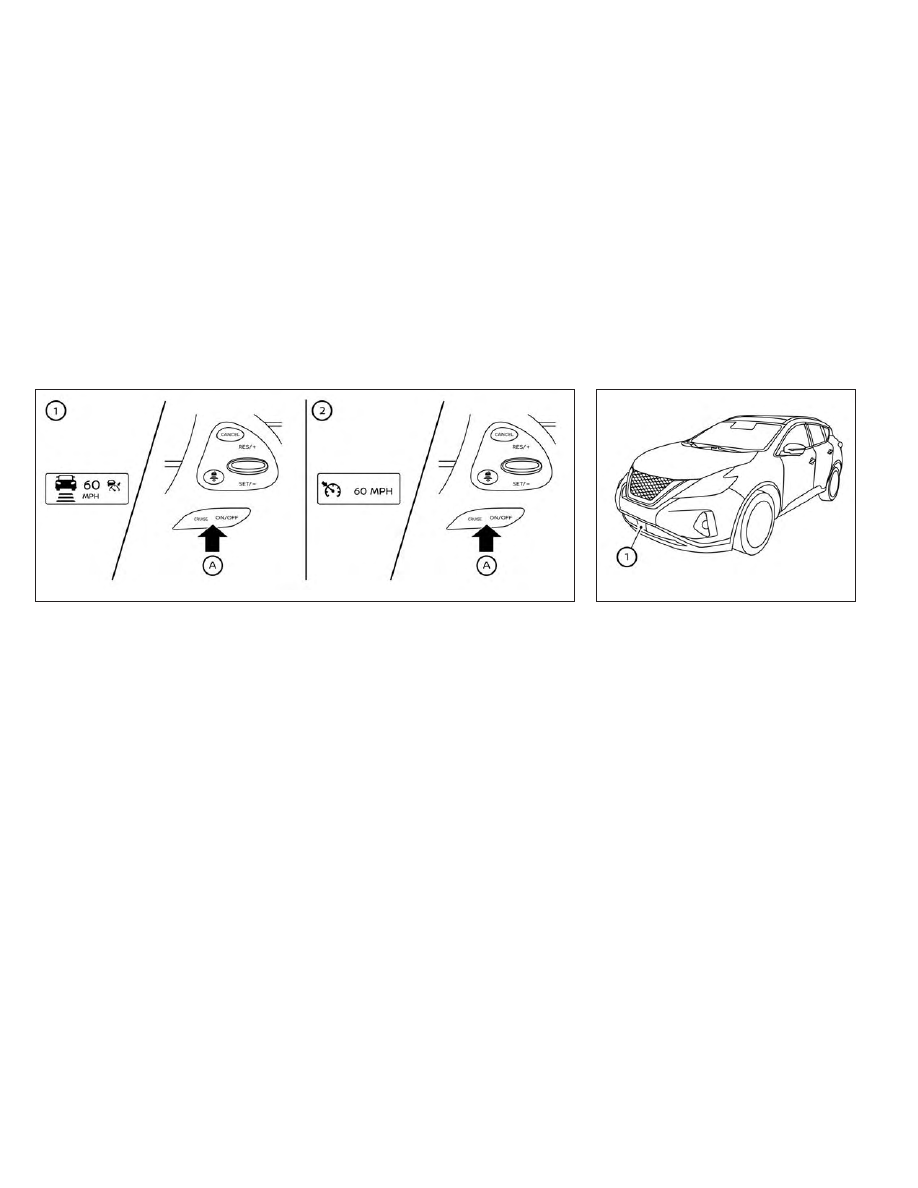Nissan Murano (2022 year). Manual in english - page 19

HOW TO SELECT THE CRUISE
CONTROL MODE
Selecting
the
vehicle-to-vehicle
dis-
tance control mode:
To choose the
vehicle-to-vehicle distance control mode
O
1
, quickly push and release the CRUISE
ON/OFF switch
O
A
.
Selecting the conventional (fixed speed)
cruise control mode:
To choose the con-
ventional (fixed speed) cruise control mode
O
2
, push and hold the CRUISE ON/OFF
switch
O
A
for longer than approximately 1.5
seconds. For additional information, see
“Conventional (fixed speed) cruise control
mode” (P. 5-77).
VEHICLE-TO-VEHICLE DISTANCE
CONTROL MODE
In the vehicle-to-vehicle distance control
mode, the ICC system automatically main-
tains a selected distance from the vehicle
traveling in front of you according to that
vehicle’s speed (up to the set speed), or at
the set speed when the road ahead is clear.
The ICC system is intended to enhance the
operation of the vehicle when following a
vehicle traveling in the same lane and
direction.
LSD4601
LSD3441
5-60
Starting and driving